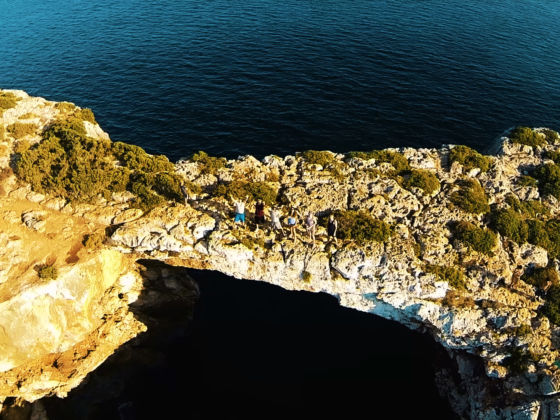The small island of Mallorca, Spain is a rock climbing haven. For a long time this rocky island has claimed a spot as one of Europe’s best climbing destinations — from sport to bouldering to deep water soloing. The largest of the five Balearic Islands, an archipelago of Spain in the western Mediterranean Sea, this limestone isle has great inland sport climbing and a rugged coastline that provides some of the most fun deep-water soloing in the world.

Rock Climbing in Mallorca, Spain: An Amazing Deep-Water Soloing Destination
There are three distinct climbing regions on the island, each offering a different type of climbing. Southwest Mallorca is probably the most famous climbing area. The crags around the cities of Palma and Valldemossa are nearby and easily accessed. The southwest is mostly known for its sport climbing and has the largest crag, Sa Gubia, in Mallorca. Northwest Mallorca, between Soller and Inca, has the highest peaks and there are loads of interesting and epically beautiful climbs.
Where the southwest is busy, Northern Mallorca is much quieter. The most popular crag in the north is La Creveta. Unlike the sport climbing in the south and north, eastern Mallorca is famous for its deep-water soloing areas — if you fall, it’s into the friendly, warm Mediterranean Sea.
The good thing about Mallorca is it’s relatively small with good roads, so you can get around easily and pack in as many climbs as your arms will allow. The best time to go is anytime except the hot, busy summer. But even in the summer, you can find a shady climb you’ll enjoy. Rockfax put together a super comprehensive guide (almost 2,000 routes) to both sport climbing and deep-water soloing routes in Mallorca. Get it here.
How to get there
Mallorca is the largest of the five Balearic Islands off the coast of Spain. You can fly into Palma de Mallorca airport (on the Southwest part of the island) from anywhere in Europe. Alternatively, you can take a ferry from Barcelona or Valencia — it’ll take about 3 hours.
What to consider
- Locals report a lot of break-ins. Don’t leave anything of value in your car when you’re off climbing.
- There are routes for climbers of all abilities, from beginner to advanced.
- The rock quality is top-notch. Great for climbing.
- The southwest part of the island, around Palma (the capital), is the most touristy area.
- You can checkout Rockfax’s free database of climbs here.
- The climate of Mallorca is classified as the Mediterranean which means mild, stormy winters and hot, dry summers.